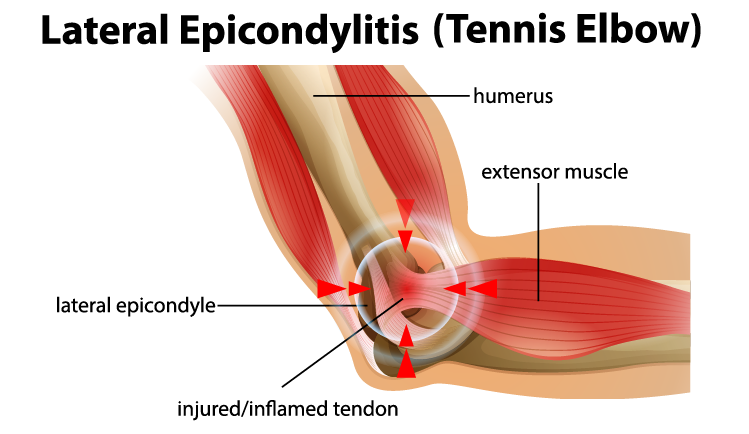
Woman having elbow ache due to lateral epicondylitis or tennis elbow. workplace injury
Mention tennis elbow, and we are likely to think of tennis players. This common elbow injury, however, can affect workers in varying industries and occupations such as computer users, manufacturing workers, and service workers.
In this article, we explain why tennis elbow occurs in workplaces and how it can be prevented.
Quick facts
- Tennis elbow is the most common elbow injury, affecting 1-3% of the general population
- Of those affected patients, only 10% are tennis players
- Tennis elbow is also known as lateral epicondylopathy or lateral epicondylitis
- It can be caused by recreational (e.g. tennis playing) or work activities
- It was the most common elbow/forearm injury we diagnosed in the past 12 months, comprising 26.63% of complaints of the elbow/forearm region
- $18,500 was the median Workers’ Compensation paid for musculoskeletal conditions (Safe Work Australia)
Watch our Workplace Health Provider Max Cohrssen explain the occurrence of tennis elbow injuries in workplace settings:
Tennis elbow is a frequently reported condition in several working populations, such as computer users, manufacturing workers, and service workers
Why it occurs
Tennis elbow is typically a chronic overuse injury and relates to degeneration of the tendon. The tendon can degenerate when load applied exceeds the tendon’s tolerance, causing microtears of the tendon. Multiple microtears lead to degenerative changes within the tendon.
Slow and heavy effort allows tendons to adapt to stress, whereas speed and/or repetition can cause overload. Once the tendon is painful, it is likely to be underused, which will again change the tendon structure, leading to progressive weakening and further risk of injury.
Unfortunately, speedy repetitive tasks are common in manufacturing and processing industries, leaving these workers more vulnerable to tendon overload injuries.
There can be large variability in causes for this pain, including:
- General health factors (ie. diet, sleep, alcohol, smoking, obesity, diabetes)
- Lack of task rotation (daily fatigue of the same muscles, no chance to recover)
Which workers are at risk?
Tennis elbow is the most common elbow condition affecting 1–3% of the population. It is more prevalent in those who are middle-aged (40–60 years) and typically affects the dominant arm, especially when exposed to daily repetitive motions.
It has been linked to actions involving:
- repetitive gripping and/or wrist extension
- repetitive turning of the arm while the elbow is in extension
- poor technique, biomechanics, and equipment
- handling tools >1kg, handling loads >20kg at least 10 times/day, and performing repetitive movements >2 hours/day
“It is a frequently reported condition in several working populations, such as computer users, manufacturing workers, and service workers.” (Work‐relatedness of lateral epicondylitis)
Smoking, obesity, increased elbow carrying angle and prior corticosteroid use are contributing risk factors associated with the development of tennis elbow. Psychosocial factors associated with tennis elbow include low job control and low social support.
Treatment and recovery – what can employers do?
The prognosis for tennis elbow injuries is generally good, with the condition resolving within 12 months. There are many things employers can do to help with recovery, including:
- Encourage your employees to see your onsite workplace health provider at the earliest sign of pain. Early intervention will result in better outcomes.
- Consider rotating the injured worker to a different task that keeps them on full duties. Often workers will know which jobs they can perform without aggravating their elbows.
- Ensure the worker is wearing their brace (if prescribed) before starting work
- Encourage stretching during work breaks
- Positively reinforce any progress the worker has made
- Consult with onsite health provider regarding workplace injury trends data to prevent future injuries
Conclusion
Tennis elbow, despite its name, can affect workers in various settings where they handle tools and/or perform daily repetitive motions. An onsite early intervention program helps to provide treatment at the first sign of pain, resulting in better outcomes, preventing injuries from escalating and helping employees continue working. A comprehensive onsite injury management program can also make suggestions based on data collected, thus enabling workplace changes to be implemented to reduce or eliminate risks.
Sign up to our monthly enewsletter
"*" indicates required fields

